I made a series of instructional videos for a handful of Middle School students during the pandemic. I was told they were useful but I was never aske to make any more.
Hobby: Water Sampling and analysis
April 19, 2024
DIY Bio, Hobby Water Quality Analysis Leave a comment
A composite of other people’s music
April 19, 2024
In order to hear progressions in a chord that I haven’t heard before, it’s useful to mix music the way Private Label wineries do with wines they didn’t create. As long as the tempo and key are the same, I’ve created sounds that give me ideas.
I can’t claim these as anything but plagiarized from Pond5 composers but I’m not familiar with anyone advertising that they use this technique.
Ode to the O’O
April 19, 2024
Music Music, O'O bird of Hawaii Leave a comment
The last Hawaiian O’O bird was recorded in 1986. When the person who recorded it rewound the tape to listen to it hours after the bird had flown away, the excited bird immediately flew back expecting to find another of his species.
I wrote this music when I heard that story.


I used an app called KeyFinder to get the key of the bird-song. I used HookTheory to find the most popular chord progressions in that key and output the basic structure to MuseScore to finish it up. Several riffs are purely my own, but I can’t say I actually “composed” anything. It was more like I “put it together”.
Hobby: Being Santa
April 19, 2024
Photographic Studio, Santa Claus Photographic Studio, Santa Claus Leave a comment
There’s definitely something about putting on a Santa suit and seeing the wonder and excitement in a kids eyes for the first time.
I started being Santa at work in 2018 and it’s become an obsession. So much so that I’ve dedicated an entire web page to it.
Santas.Haus
Hobby: Biology
October 1, 2016
DIY Bio, Hobby, Microbiology DIY Bio, Microbiology, Water Quality Analysis Leave a comment
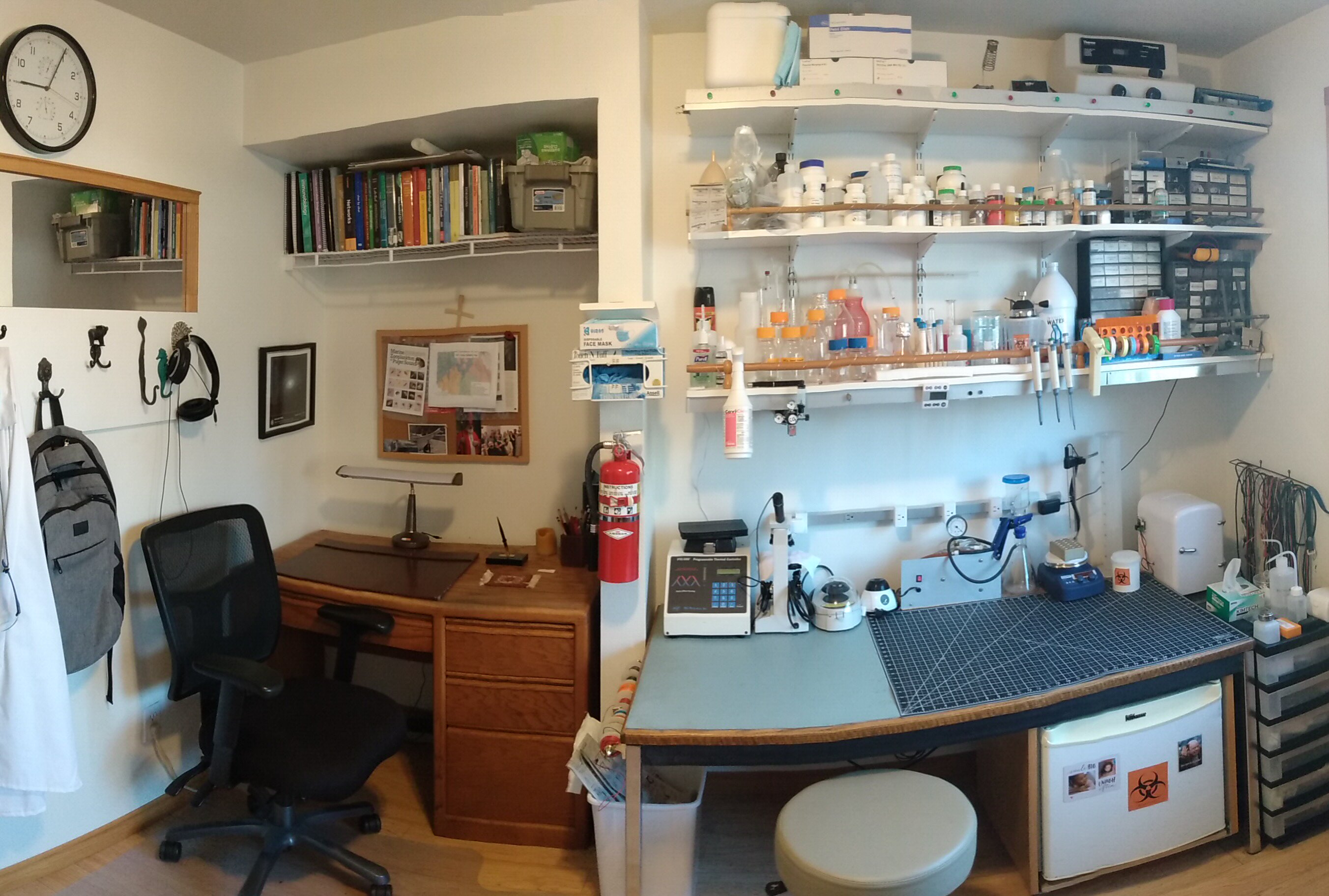 Most of my work has involved genetic manipulation of safe strains of e. coli and running mini-preps for sequencing.
Most of my work has involved genetic manipulation of safe strains of e. coli and running mini-preps for sequencing.
Since I live next to a River and Puget Sound, I have been taking regular water samples in the area for dissolved oxygen, pH etc. and cataloging phytoplankton. My main interest is in isolating phages that target these plankton and building a meta-genomic profile of them as a baseline. Between the rapid acidification of this part of Puget Sound, the fresh water of the river and the viruses brought by the sea lions that have migrated here to catch salmon I’m pretty sure the profile will be changing over the next decade. The reason I’m using phages is because the small size of their RNA and even smaller areas that aren’t highly conserved make them good candidates for mutations under the stresses of the environment.
Hobby: Shakyou
September 30, 2016
Hobby, Shakyou Leave a comment
Shakyou is the zen meditation practice of writing the sutras out by hand. For me, the meditation includes the feel and smell of grinding the ink and the feel of the limited interaction of brush with paper as I recite the sutra.
I spent the summer of 2 007 building the floor lamps, altar, collection box and seiza tables you see here for the use in the Buddhist Church of Spokane, Washington.
007 building the floor lamps, altar, collection box and seiza tables you see here for the use in the Buddhist Church of Spokane, Washington.
I bought ink suzuri stones, brushes, paper and other supplies for 18 seats and made fancy wooden boxes for each set.
When people entered, they were greeted with a warm, damp cloth to wipe their hands and face with and to sit by a hako niwa.
Each participant then picked their supplies from a table and sat down in a chair or on a zabuton to begin their meditation.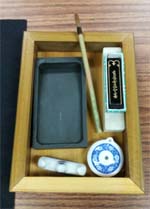
Because this was done in a lunch area, the fluorescent overhead lamps and paraphernalia around the area were distractions. I purchased table lamps for the tables and made traditional Japanese lamps for the seiza tables and turned off the overhead lights.
On the far right of the picture you can see a hanging curtain with the symbol for this church. These were screen printed in gold on moleskin fabric and hung on rolling coat hangers. There was a wall of 6 alternating black and white curtains-on-rollers that walled this space off from the greeting area and the kitchen storage that was visible next to the space.
The carpets and runners I brought from home finished the space and completely converted the space from a lunch room into a magical space for meditation.
Hobby: Optics
September 16, 2016
Hobby, Physics Leave a comment
I only worked on optical systems that others had designed at Subaru Telescope, but while there I met Dr. Stephen Pompea of the National Optical Astronomy Observatory. He had worked with Nishimura San of Subaru when they were both at U of Arizona and “Nishi” was always kind enough to take me along when he visited with other scientists from the mainland.
Dr. Pompea has always been an evangelist for teaching optics to pre-high school youth and in 2003 he got an NSF grant for “Hands-on optics” which gave teaching materials to grade school teachers in optics. I was invited to participate in the inaugural class held at USC in 2003 and was able to teach it to a few of the home-schooled kids in Spokane, Washington.
The class provided a large notebook and a wide range of projects for us to teach with, but I went beyond the materials provided and built optical rails, and other “toys” for kids to take home to play with.
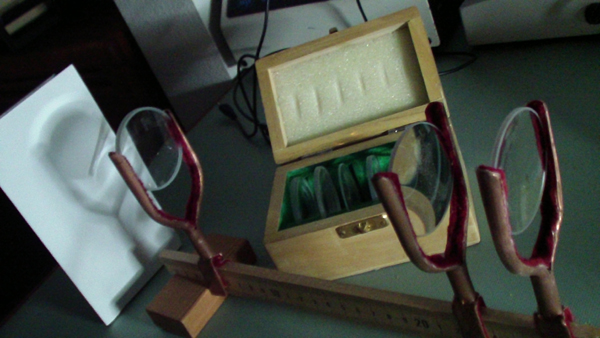
Hobby: Holography
August 6, 2016
Hobby, Physics Holography Leave a comment
In the early 1960s Holography emerged as one of the most exotic uses of the unique light produced by lasers. By the early 1970s it began to make the transition from scientist only to hobbyist. At first it was to exploit it as an artistic medium but the amateurs that saw its potential quickly developed innovations of media and techniques that became main-stream.
By the mid 1990s the nascent “World Wide Web” had one or two Usenet newsgroups called alt.holography dedicated to the hobby. Between this and a couple of “how-to” books published by the 1970s superstars of the San Francisco Holography Art movement everyone had access to the technology.
The hardware came available with affordable Kodak holography plates and the surplus lasers from copy machines made the hobby approachable to interested amateurs. 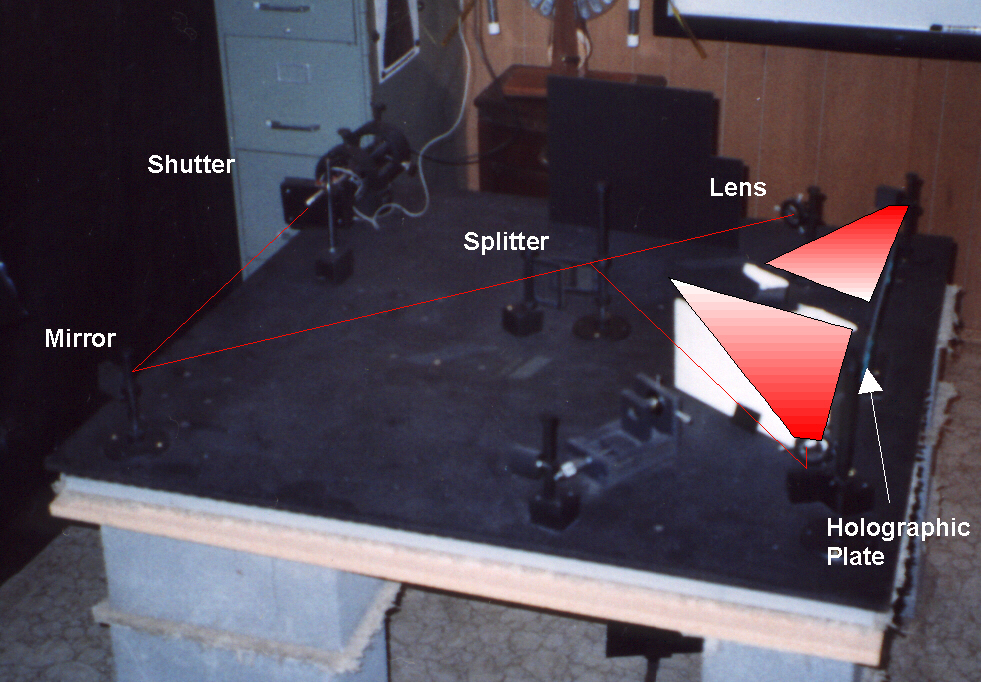
My holography table was built from the aft bulkhead of a 747 from Boeing Surplus which is a two-inch high honey-comb sandwiched between two aluminum sheets. I added padding and bricks and placed it in my basement.
In the configuration seen in the pictures it is making a reflection hologram of some plaster whales. One beam illuminates the whales, while the other illuminates the plate at the far right.
As y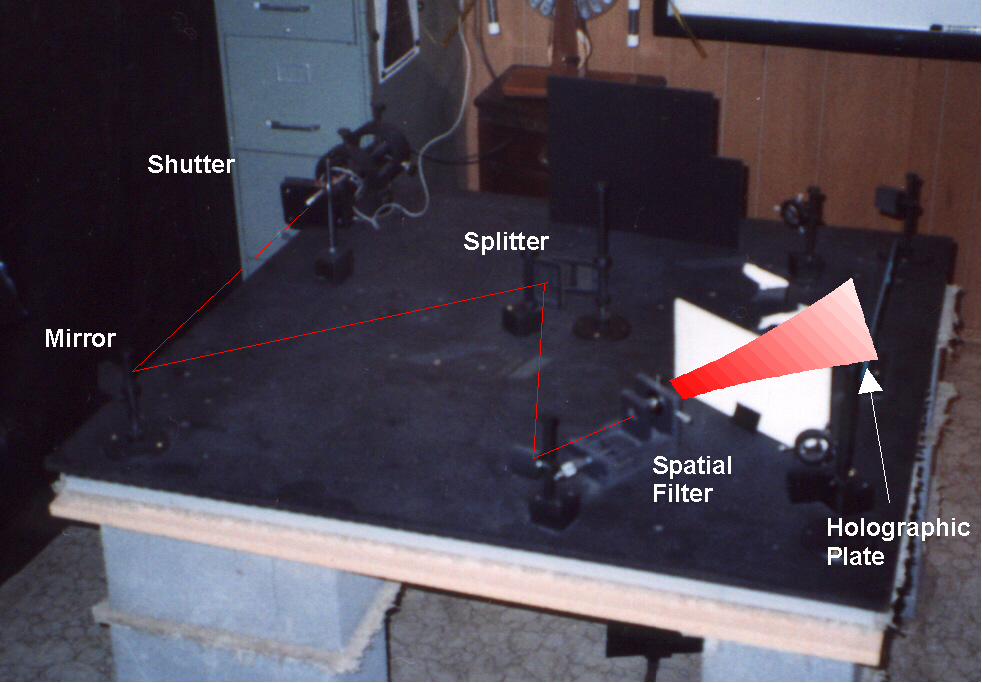 ou can see, this is all stuff hacked together from scraps.
ou can see, this is all stuff hacked together from scraps.
Hobby: Rocketry
August 6, 2016
Hobby, Physics Leave a comment
The 1990’s was a wonderful time to be a hobbyist.
The contagious optimism of that time lent itself well to the enthusiasms of people and families [ 😦 mostly men and mostly white] who bonded in far flung disciplines that had always been the purview of “trained professionals”.
One of the hobbies that decade “launched” was high power rocketry. There were always two reactions the first time anyone ever saw a launch of anything bigger than the “Estes”rockets you could buy at any hobby store: Awe and fear that you could do more than take someone’s eye out. To assuage such fears, the hobby community itself, the US  Federal Aviation Administration and the Bureau of Alcohol, Tobacco and Firearms provided strict regulations around the storage, purchase and use of any rocket motors with a specific impulse above 36 Lb-seconds. In order to better assure that the hobbyist would align with these regulations, hobbyists associations coordinate the launches and supply amateurs with the supplies and training they need.
Federal Aviation Administration and the Bureau of Alcohol, Tobacco and Firearms provided strict regulations around the storage, purchase and use of any rocket motors with a specific impulse above 36 Lb-seconds. In order to better assure that the hobbyist would align with these regulations, hobbyists associations coordinate the launches and supply amateurs with the supplies and training they need.
In 1996 I passed my level 1 certification and my level 2 in 1997. In order to be certified to level 3 (allowing launch of rockets with a specific impulse exceeding 1,150 Lb-seconds) it was traditional to build something novel into the design. In those days before cell phones and micro-power electronics the favorite was altimeter-based parachute deployment.
 Mine was a pic-based system with a clunky altimeter and an enormous T-1 accelerometer but what I really wanted to study was what’s called the mach disks of the rocket’s exhaust. This is actually a phenomena that reveals volumes about the sonics, plasma and nozzles of all jet and rocket propulsion.
Mine was a pic-based system with a clunky altimeter and an enormous T-1 accelerometer but what I really wanted to study was what’s called the mach disks of the rocket’s exhaust. This is actually a phenomena that reveals volumes about the sonics, plasma and nozzles of all jet and rocket propulsion.

Recent Comments